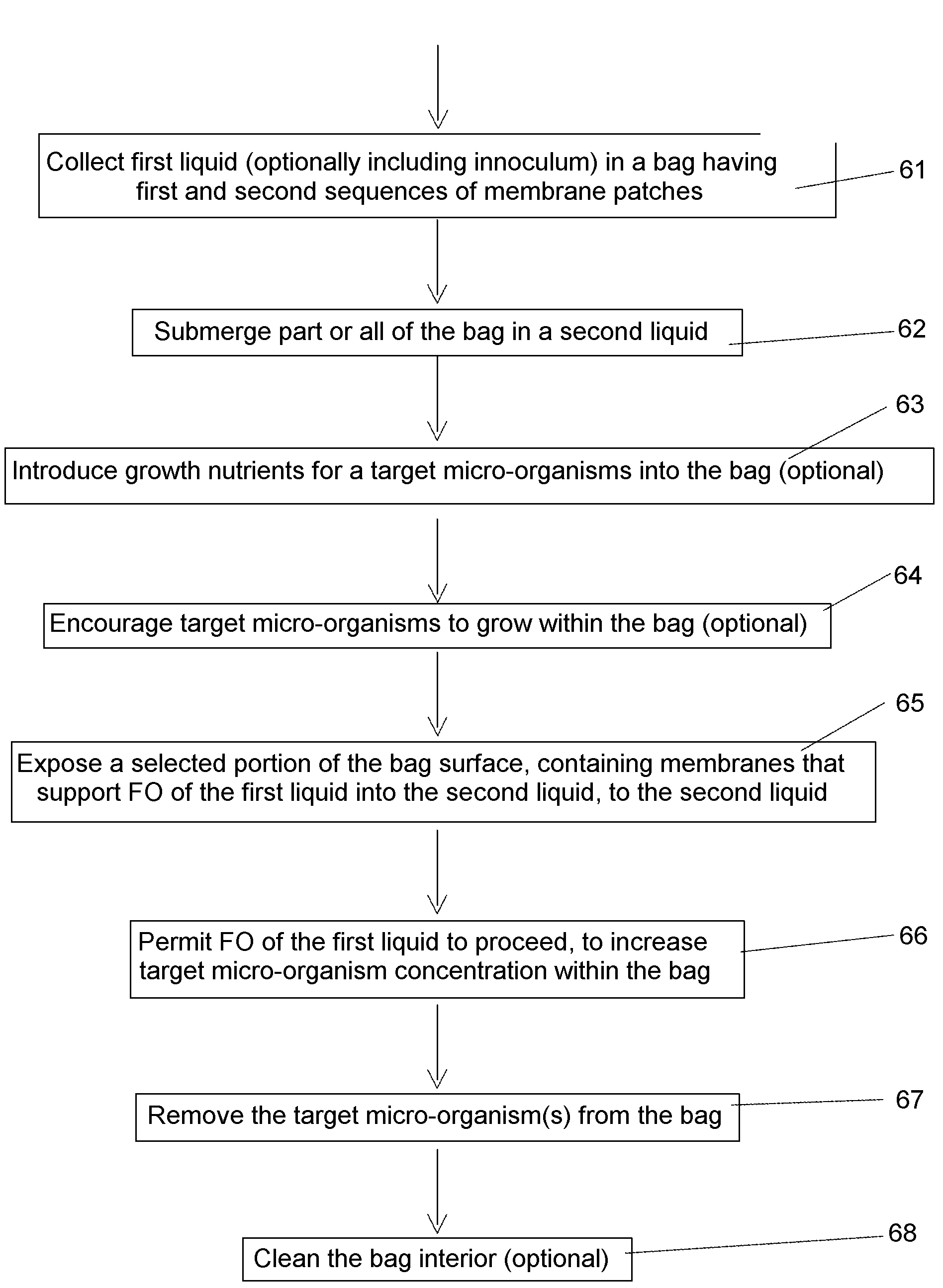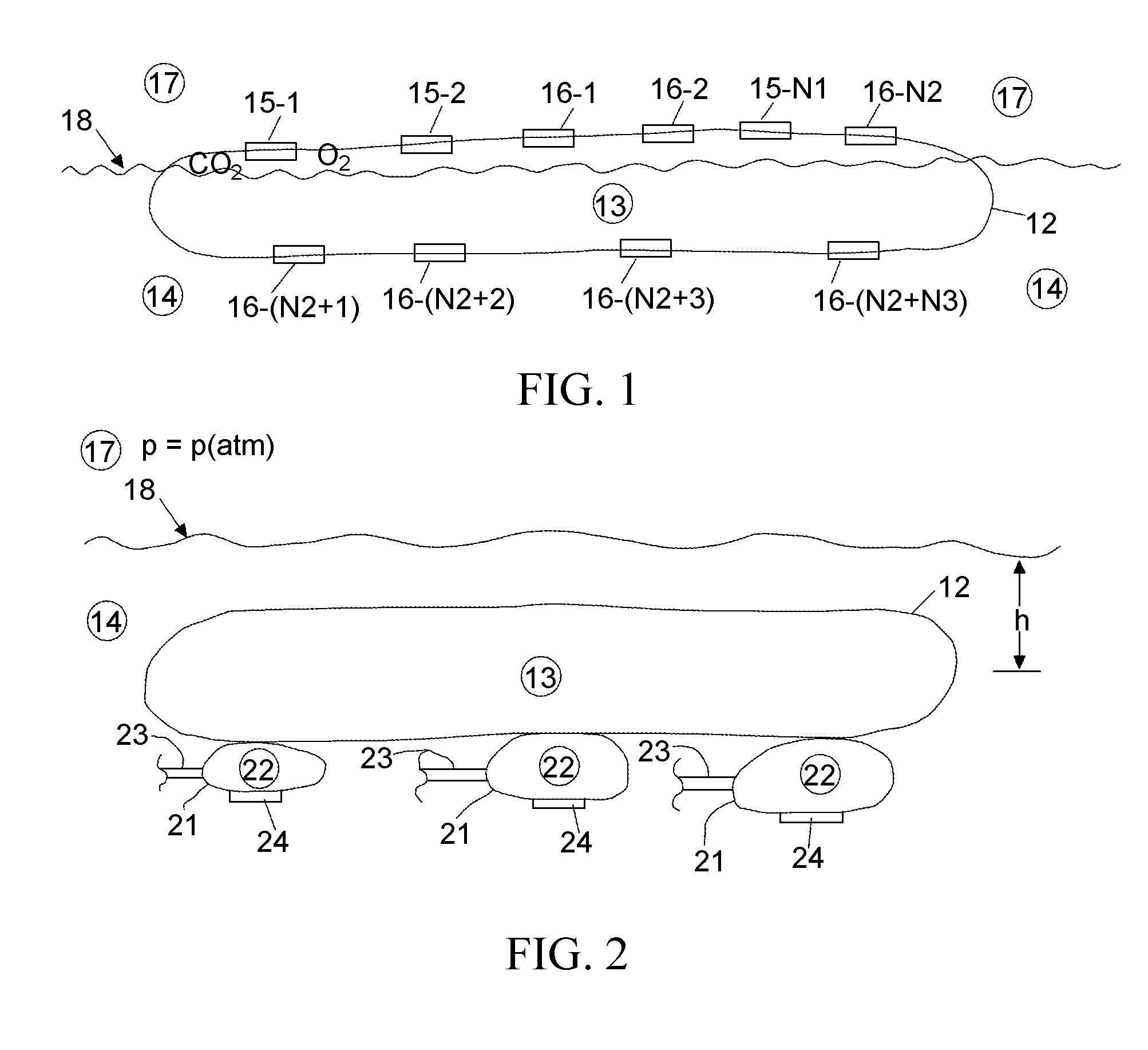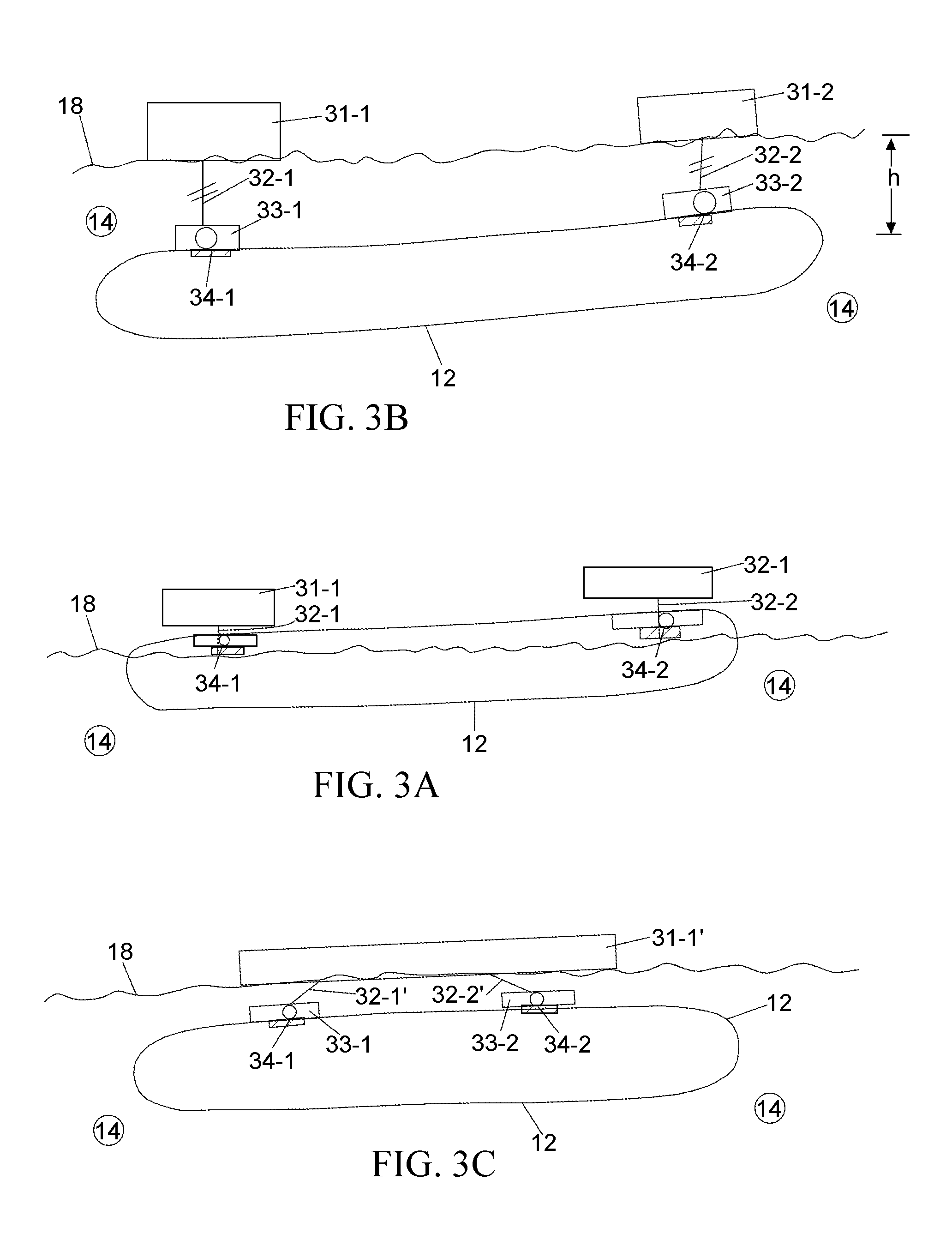Algae bioreactor using submerged enclosures with semi-permeable membranes
a technology of semi-permeable membranes and algae bioreactors, which is applied in the field of algae bioreactors using submerged enclosures with semi-permeable membranes, can solve the problems of limited commercial production of algae, high operating costs, and limited use of algae for large-scale commercial production, so as to avoid the problems of land costs and competition, reduce the contribution of carbon dioxide to global warming, and reduce the effect of environmental pollution
- Summary
- Abstract
- Description
- Claims
- Application Information
AI Technical Summary
Benefits of technology
Problems solved by technology
Method used
Image
Examples
embodiment 11
[0023]The patches of semi-permeable membranes on the bag allow the bag contents to beneficially interact with the surroundings. For example, a gas exchange membrane removes excess O2 from the bag interior and allows CO2 to enter, which aids algae growth. FIG. 1 is a sectional side view of an embodiment 11 of the system. A bag 12, containing a liquid effluent (second liquid) 13 and one or more selected algae and / or other micro-organism(s), is partly submerged in a first liquid 14 of a type different from the second liquid. An upper surface of the bag includes a first sequence 15-n1 (n1=1, 2, . . . , N1; N1≧1) of permeable membrane patches that permit exchange of CO2 outside the bag 12 with O2 inside the bag. The upper surface of the bag 12 optionally includes a second sequence, 16-n2 (n2=1, . . . , N2; N2≧0) of liquid-permeable membrane patches that permit transport of the second liquid 13 from within the bag 12 into the first liquid 14 by forward osmosis (FO). A lower surface of the...
first embodiment
[0024]The patches of FO membrane 16-n2 remove water to concentrate nutrients, to promote growth of algae and / or other micro-organisms, to concentrate salts or added reagents that induce algal oil production, and to concentrate-algae and / or other micro-organisms to assist in their harvesting and processing. By placing the patches of FO membrane 16-n2 on the upper surface of the bag, dewatering can be regulated by controlling the average depth h of the bag below the surface (FIG. 2). When the FO membrane 16-n2 is at the surface and mostly exposed to air, little dewatering occurs. When the FO membranes are submerged, the membranes actively dewater the interior of the bag 12. In this first embodiment, the bag 12 is submerged by an average depth h below the surface 18 of the water 14, as illustrated in FIG. 2, to activate the FO process and / or to protect the bag from inclement weather, such as a storm at sea.
[0025]In an incubation position, the upper surface of the bag 12 floats adjacent...
PUM
| Property | Measurement | Unit |
|---|---|---|
| time | aaaaa | aaaaa |
| thickness | aaaaa | aaaaa |
| pressure | aaaaa | aaaaa |
Abstract
Description
Claims
Application Information
 Login to View More
Login to View More - R&D
- Intellectual Property
- Life Sciences
- Materials
- Tech Scout
- Unparalleled Data Quality
- Higher Quality Content
- 60% Fewer Hallucinations
Browse by: Latest US Patents, China's latest patents, Technical Efficacy Thesaurus, Application Domain, Technology Topic, Popular Technical Reports.
© 2025 PatSnap. All rights reserved.Legal|Privacy policy|Modern Slavery Act Transparency Statement|Sitemap|About US| Contact US: help@patsnap.com



